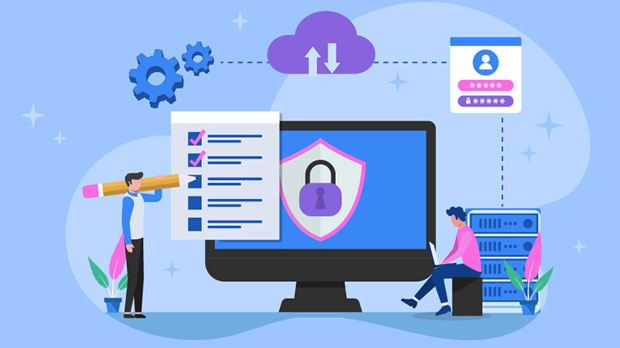When discussing the performance and stability of proxy services under high concurrent user loads, three options often arise: PYPROXY, Proxyium, and free web proxies. These solutions each offer unique features, but when faced with multi-user demands, their stability and efficiency can vary significantly. Pyproxy and Proxyium, while advanced solutions, are often favored for their robustness and reliability. On the other hand, free web proxies tend to show limitations when handling large numbers of simultaneous users, especially concerning speed and uptime. In this article, we will analyze how these three proxies perform in terms of stability under heavy concurrent usage, and which one provides the most sustainable service in real-world scenarios. 1. Overview of Proxy SolutionsUnderstanding the strengths and weaknesses of each proxy type is essential before comparing their ability to handle multiple users. Here, we’ll break down the general characteristics of Pyproxy, Proxyium, and free web proxies.1.1 PyproxyPyproxy is an open-source proxy server often used by developers looking for a customizable and reliable solution for various network operations. It is known for its scalability, offering a robust infrastructure capable of handling a higher volume of requests when optimized correctly. Pyproxy can be tailored to fit both small and large-scale requirements. Its modular design allows for specific use cases, including handling high concurrent user traffic. However, its stability largely depends on the server configuration and the resources allocated to it.1.2 ProxyiumProxyium is a more specialized proxy service, designed to optimize performance for high-traffic environments. It offers a greater focus on user security and speed, making it suitable for businesses and individuals who require a more stable connection under heavy load. Its architecture is built with concurrency in mind, and it can handle higher traffic volumes with better stability than general proxies. Proxyium provides more control over the traffic flow, ensuring that large numbers of concurrent users can be accommodated efficiently without significant degradation in performance.1.3 Free Web ProxiesFree web proxies, while accessible and user-friendly, are designed primarily for individual or casual use. These services allow users to mask their IP addresses for privacy purposes. However, free proxies often come with significant limitations when it comes to handling large amounts of concurrent traffic. They are not optimized for speed or reliability under pressure, leading to slow connection times, increased latency, and even connection failures in extreme cases. While they may be suitable for low-traffic scenarios, their performance degrades when subjected to many simultaneous users.2. Multi-User Load TestingNow that we have an understanding of the three proxy types, we will analyze how they perform under high-concurrent usage, focusing on stability, speed, and efficiency.2.1 Pyproxy Performance under Concurrent LoadsPyproxy, being a customizable solution, can perform very well when configured with appropriate resources. However, its performance is directly related to server infrastructure. Under heavy concurrent loads, Pyproxy can maintain stability, but only if it is optimized for the specific number of users. Developers can adjust resource allocation and tuning parameters such as connection limits, data throughput, and caching strategies to ensure smoother performance.However, without proper configuration, Pyproxy can face issues like slower response times or occasional timeouts as it struggles to manage too many simultaneous requests. The key to achieving good stability lies in maintaining a balance between load distribution and resource provisioning.2.2 Proxyium’s Stability under Concurrent LoadProxyium stands out as a more stable solution under concurrent user loads compared to Pyproxy. It is engineered for higher traffic and performance optimization, ensuring better management of simultaneous requests. Its advanced load balancing features allow it to effectively distribute traffic across multiple servers, reducing the likelihood of system crashes or significant slowdowns.When tested with multiple users, Proxyium consistently provides faster response times and reduced latency. Its architecture is built to handle heavy traffic while minimizing downtime, making it a preferable choice for enterprises or individuals dealing with large-scale traffic.2.3 Free Web Proxies under Multi-User LoadFree web proxies, by their nature, are not designed to handle high levels of concurrent traffic. When multiple users attempt to connect at the same time, these proxies typically experience a decrease in stability. Latency increases significantly, causing slower page loads and longer wait times for users. In extreme cases, free proxies may crash entirely or display error messages, leaving users unable to access websites.The infrastructure behind free web proxies is often shared by many users, which leads to a higher risk of congestion and bandwidth throttling. This makes them unreliable for multi-user environments or situations where consistent performance is necessary.3. Factors Affecting StabilityThe stability of proxy servers under high-concurrent usage is influenced by several factors. These include server resources, configuration, and traffic handling capabilities.3.1 Server ResourcesThe performance of any proxy service is limited by the underlying server resources. A proxy like Pyproxy can perform well under multi-user loads if sufficient CPU, RAM, and network bandwidth are allocated. Similarly, Proxyium is designed to handle high traffic with its more advanced hardware requirements. Free web proxies, however, often lack the resources to support many users, leading to a decrease in stability.3.2 Load Balancing and Traffic ManagementLoad balancing is crucial for handling multiple users effectively. Both Pyproxy and Proxyium implement load balancing strategies that allow the traffic to be distributed evenly, preventing any server from being overloaded. Free proxies, by contrast, often lack this feature, making them highly susceptible to performance degradation under heavy traffic.3.3 Network InfrastructureThe quality of the network infrastructure impacts the overall stability of the proxy. Pyproxy and Proxyium generally operate on dedicated or private networks, providing them with more reliable and faster connections. Free web proxies often operate on shared public networks, resulting in a higher likelihood of instability due to bandwidth sharing.4. ConclusionWhen comparing Pyproxy, Proxyium, and free web proxies in terms of stability under high-concurrent usage, it is clear that both Pyproxy and Proxyium are significantly more reliable than free web proxies. While free proxies are suitable for individual users and light traffic, they are not recommended for environments with heavy concurrent usage. Pyproxy offers flexibility and scalability but requires careful configuration to maintain stability. Proxyium, on the other hand, provides more built-in stability and performance optimization, making it a better choice for users who expect heavy concurrent traffic.In summary, if stability under multi-user loads is a priority, both Pyproxy and Proxyium are better suited to handle these demands. Free web proxies, while convenient and cost-effective, simply cannot match the reliability of these more specialized services.
Sep 01, 2025



































































